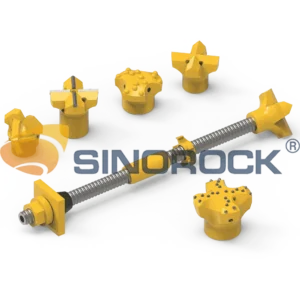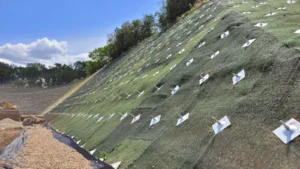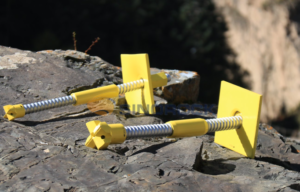Introduction
Geotechnical engineering, an essential branch of civil engineering, deals with complex geological bodies formed over long geological eras. These geological bodies consist of various defects such as faults, laminations, joints, weak interbedded layers, and dissolution grooves. The stability of these geotechnical bodies can be disrupted by changes in environmental conditions or human activities, leading to potential geological disasters such as slumps, cave-ins, rockfalls, landslides, and ground subsidence. To mitigate these risks, engineers employ rock bolts, which play a crucial role in maintaining and enhancing the stability of geotechnical structures.
The Nature of Geotechnical Bodies
Geotechnical bodies are formed through millions of years of geological processes. These bodies are inherently heterogeneous and anisotropic due to the presence of various geological defects:
- Faults: Fractures along which there has been displacement.
- Laminations: Thin layers of rock or sediment.
- Joints: Natural fractures or separations in rock.
- Weak Interbedded Layers: Layers within rock strata that are weaker than the surrounding material.
- Dissolution Grooves: Channels formed by the dissolution of rock, typically in karst environments.
These defects create potential zones of weakness within the geological body, making them susceptible to deformation and failure under certain conditions.
Causes of Geotechnical Instability
Geotechnical instability can arise from both natural and human-induced factors. Natural factors include seismic activity, weathering, and water infiltration, while human activities such as excavation, construction, and mining can alter the stress field within the geotechnical body, leading to deformation and instability. The redistribution of stresses during these activities can trigger various geological hazards, necessitating effective stabilization measures.
Rock Bolts: A Solution to Geotechnical Instability
Rock bolts are tensile rods installed within the geotechnical body to enhance its strength and stability. These bolts anchor the geotechnical body, preventing deformation and failure. The technology and techniques associated with rock bolt installation, design, calculation, construction, and monitoring form the basis of anchoring engineering.
Types of Rock Bolts
Rock bolts can be classified based on various criteria:
- Application Object: Rock bolts for rock versus soil anchors.
- Prestressing: Prestressed versus non-prestressed rock bolts.
- Anchoring Mechanism:
- Bonded Rock Bolts: Using cement mortar or resin.
- Friction Rock Bolts: Split set or expandable rock bolts.
- End Anchoring: Mechanical type.
- Hybrid Rock Bolts: Combining various mechanisms.
- Force Transmission and Load Distribution:
- Pressure-Type: Distributes load through pressure.
- Tension-Type: Transmits tensile forces.
- Pressure-Dispersed: Distributes pressure along the length.
- Tension-Dispersed: Distributes tension along the length.
- Anchored Portion Size: Full-length versus end-anchored rock bolts.
- Morphology: Cylindrical, end-expanded, or continuous ball type rock bolts.
The Role of Rock Bolts in Slope Stabilization
In slope engineering, rock bolts are installed to enhance the stability of slopes and prevent deformation. One end of the rock bolt is connected to the engineering structure, while the other end is anchored within the geotechnical layer. When necessary, these bolts are prestressed to counteract the tensile forces generated by geotechnical pressure, water pressure, or wind loads. The prestressed rock bolts actively apply pressure to the slope, making them an active reinforcement measure, unlike non-prestressed rock bolts, which are passive and only become tensioned when the geotechnical body deforms.
Prestressed vs. Non-Prestressed Rock Bolts
Prestressed rock bolts are tensioned before the application of external loads, providing immediate stabilization. In contrast, non-prestressed rock bolts only become tensioned as the geotechnical body deforms. Therefore, prestressed rock bolts offer a proactive approach to stabilization, while non-prestressed rock bolts provide a reactive solution.
Applications of Rock Bolts in Geotechnical Engineering
Tunnel Support
Rock bolts are extensively used in tunnel construction to support the tunnel walls and prevent collapse. The bolts are installed in a pattern to create a stable structure, transferring loads from the tunnel lining to the surrounding rock mass. This method enhances the overall stability and safety of the tunnel.
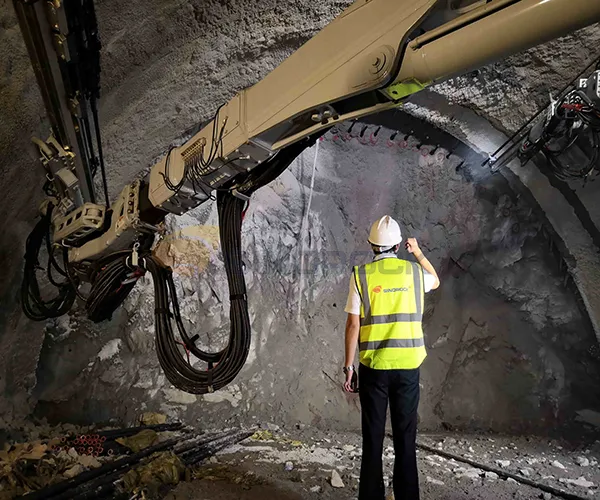
Slope Stabilization
In slope engineering, rock bolts prevent landslides and stabilize slopes. By anchoring the slope to a stable geotechnical layer, the bolts counteract the forces that could cause slope failure, such as water pressure and gravitational forces.
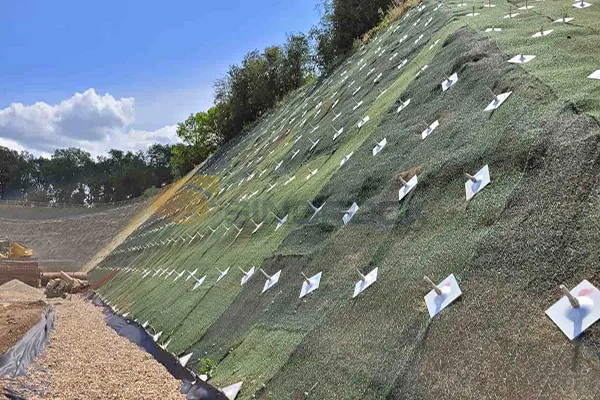
Mining Operations
In underground mining, rock bolts are essential for stabilizing mine walls and ceilings. The bolts help prevent rockfalls and cave-ins, ensuring the safety of mining operations and workers.
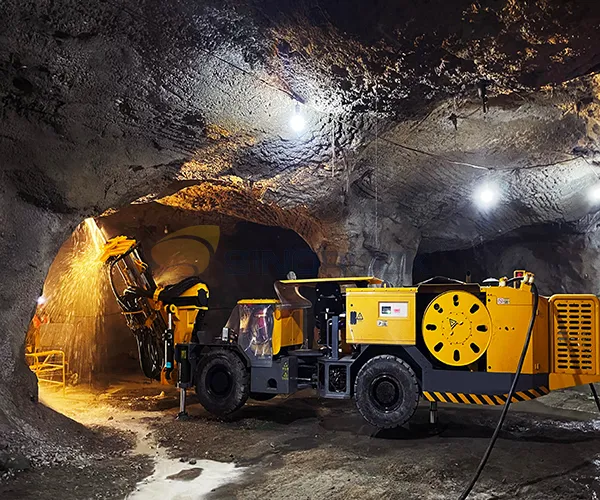
Foundations and Retaining Structures
Rock bolts are used to reinforce foundations and retaining structures, providing additional stability and preventing settlement or failure. By anchoring these structures to stable geotechnical layers, rock bolts enhance the overall load-bearing capacity.
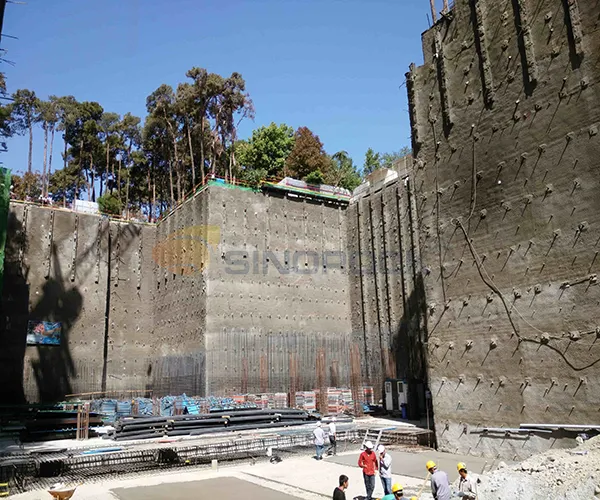
Design and Installation of Rock Bolts
Design Considerations
The design of rock bolt systems involves several critical considerations:
- Geological Conditions: Understanding the geological environment and identifying potential zones of weakness.
- Load Requirements: Determining the load that the rock bolts need to withstand, including static and dynamic loads.
- Bolt Type and Length: Selecting the appropriate type and length of rock bolts based on the geological conditions and load requirements.
- Anchoring Method: Choosing the most effective anchoring method, such as bonded, friction, or end anchoring.
Installation Process
The installation of rock bolts involves several steps:
- Drilling: Drilling holes into the geotechnical body at specified locations.
- Inserting Bolts: Inserting the rock bolts into the drilled holes.
- Anchoring: Securing the bolts using the chosen anchoring method.
- Tensioning: Applying tension to prestressed rock bolts to enhance stability.
- Monitoring: Continuously monitoring the rock bolt system to ensure its effectiveness.
Conclusion
Rock bolts play a crucial role in maintaining the stability and safety of geotechnical structures. By understanding the complexities of geotechnical bodies and the factors that influence their stability, engineers can effectively design and implement rock bolt systems to prevent geological disasters. The ongoing advancements in materials, technology, and sustainable practices promise to enhance the performance and application of rock bolts in geotechnical engineering, ensuring safer structures for the future.

